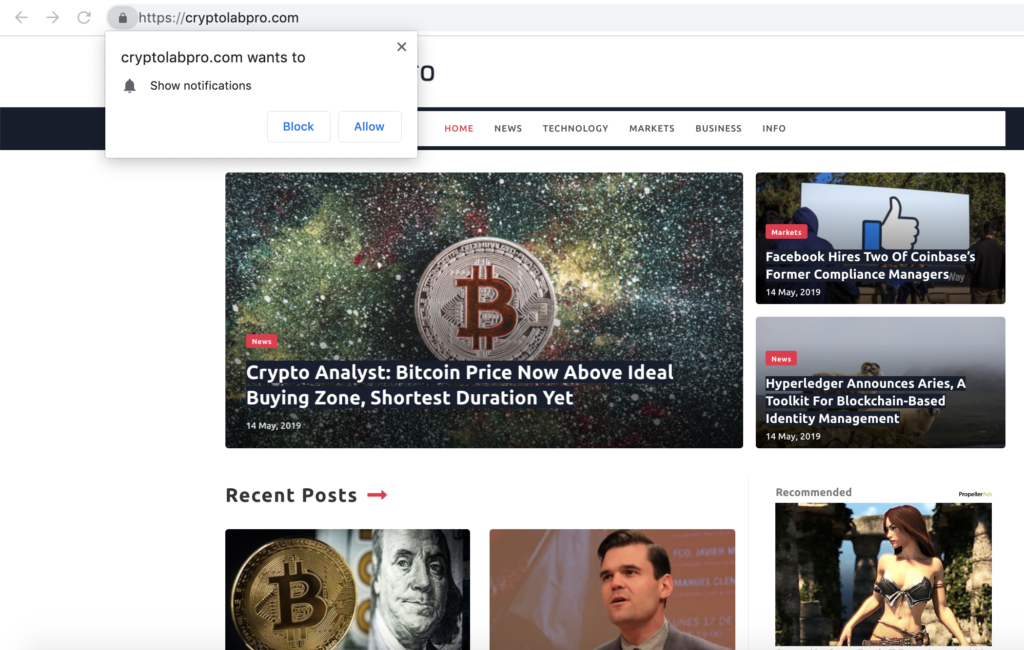
If you own a website, then there’s a good chance that you want to earn money from it. That can be easier said than done, and people can make many mistakes along the way.
There are three main ways that you can start to enjoy the money rolling in. It’s about understanding your own needs and that of your website’s readers.
Here we look at 3 options: Subscriptions, Donations, and Native Ads – their pros and cons, and how they can work for your website.
Native Ads
Native ads are a universal solution, and if you want your website to look as slick and professional as possible, then they can be the way forward. They sit in seamlessly with your other content and will help to make your web pages look cleaner and less commercial.
That’s because native ads are made to look as though they belong with the regular content. This can lead to high engagement as readers will actually pay attention to the advert rather than simply scrolling past it.

Pros
- Great customer experience – The vast majority of users will see and website and not even look at an advert. That’s because they look obvious and are often unrelated to your interests. Native ads are a lot more user-friendly and more likely to be noticed by visitors who are looking for content.
- More engagement – If you click onto any website, your brain will already process where the adverts are and not even look at them. Native ads are a lot more eye-catching, and therefore, people will actually look at them and are more likely to engage.
Cons
- Can be deceptive – One negative is that readers might feel a little deceived if they click on an advert that they thought was regular content. Native ads will have signs, however, to inform the reader that the link is sponsored content.
Make sure to mention that it’s “Sponsored content” or add a PropellerAds logo
Subscriptions
Subscriptions have been around for a long time, but they have only started to become commonly accepted on websites. Print magazines and newspapers have been charging money for ages, but users simply expected internet stuff to be free.
Thoughts have now changed with a lot of major organizations keeping most of their content behind a paywall. A great example of this is Bloomberg, which enables users to read a small amount of content, but a subscription is required to read all the rest.
Pros
- Consistent income – With subscriptions, you have a very good idea of what money will be coming in each month. Your subscribers are unlikely to vary too much from one month to the next, and this can help with long-term planning.
- Good relationships – When you have subscribers you’re going to be forming a close bond with them as they will be more invested in your product. This can help to drive up standards and also harbor the sense of community between everyone who subscribes.
- High customer retention – A good subscriber following can be hard to build up, but once you have it, you know that customers signed up because of your great content. As long as you keep that quality high, your customers are going to keep coming back for more.
Cons
- Provide constant interest – When you have a subscriber list, you have to keep providing the high-quality content which you first provided. If you don’t constantly interest your subscribers, then they might drop off, and numbers can dwindle.
- Strangles creativity – If you have a sports website which only gives sports news, then that’s fine. But if you wanted to diversify into other types of news, then that’s not what your customers signed up for, and they could reject this direction.
- Narrows your customer base – There is no doubt that free content will receive a lot more viewers than content behind a paywall. While subscriptions might give you a short-term income boost, it can also stunt growth as fewer people will hear about and read your content.
Gate your best content with Content locker!
Donations
If you love gaining as much knowledge as you can, then it’s likely that you’ve been on Wikipedia more than once. You’ll also notice that it doesn’t contain any adverts and you also don’t need a subscription to access the content.
Instead, it asks for donations in order to keep the site going. If you have a website that really connects with your audience, then this is a good idea to monetize your website. This will only work, however, in a limited number of situations.
Pros
- Low cost – With donations, it’s very easy to get everything set-up, and there are very minimal costs involved. This makes it a very convenient option as you wouldn’t have to worry about asking customers to pay for content.
- Flexible payments – Not everyone can afford to pay for content. Having a donation button allows people to pay the amount they can afford or what they think is fair. This flexibility is likely to please customers and not turn anyone away from your website.
- Personal relationship – Wikipedia is a good example of a website which has a very good relationship with its readers. Because it’s free with great content, people will freely edit and contribute to the website without payment. Donations help to create a sense of being a part of something.
Cons
- Low sign-up rate – While donations sound great in theory, the reality is that very few people will donate to the cause. The majority of readers and going to be able to consume your content without ever contributing financially towards it.
- Inconsistent income – One of the major downsides of donations is that you can never be sure of exactly what money is coming in.
This makes it hard to plan for the future and be confident about cash-flow. It’s rare that you’d get a consistent amount each month.
- Has to be unique – The vast majority of websites wouldn’t work with a donation-based system. Customers will expect there not to be adverts and the content to be unique. If you simply have a regular website, people are unlikely to contribute.
[CASE STUDY] Native Ads, Push & Crypto Website
We have tested the effectiveness of Native Ads with one of our publishers – CryptolabPro. In April 2019, we suggested testing Native Ads, additionally to Push Notifications.
Big THANKS to CryptoLabPro for letting us publish this case!
About our experiment
Duration: 2 weeks (April 22 – May 6)
Daily earnings: $200 with Push Notifications
The publisher has added Native widget to Homepage (Sidebar – 2 blocks) and internal pages – article page (sidebar – 2 blocks, in-article widgets with 3 blocks, and below the article widget, also with 3 blocks).
Please note, quality crypto traffic is in-demand and very-niche, therefore, it was significantly easier to experiment with a website like CryptolabPro.
We tried to determine how Native Ads contribute to the profitability of the website and how combining ad formats can increase profits.
Results
Daily earnings: $273 (Push + Native Ads)
Feedback from CryptolabPro:
“We were monetising with Push Ads, because we were afraid to ruin UX on our website. We had some negative experience with display banners – the money wasn’t impressive, and we saw a subtle drop in visits. Also, we were looking for more relevant ads, compared to what display ads could offer. Ideally, we wanted ads to be on financial, tech, or similar topics.
Push Notifications, in conjunction with Native ads, showed good results. The ads were relevant in the majority of the cases. Later on, we plan to experiment with placements: try different spots on the homepage; we are currently consulting with our account manager.”
Have you tested any of these methods? How do you monetize your content?






